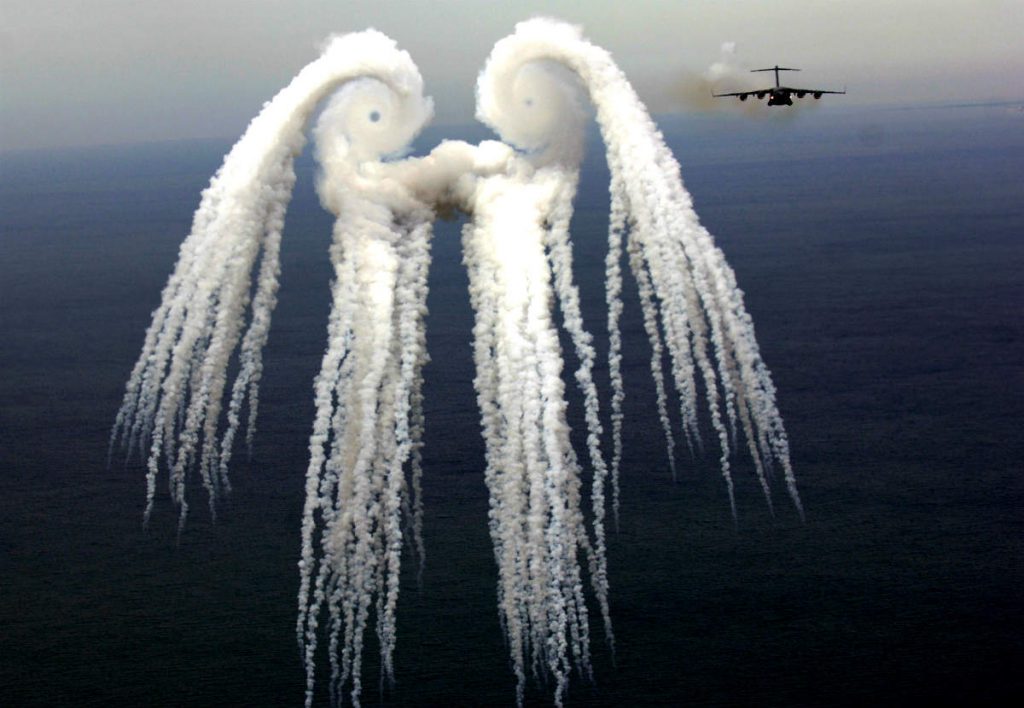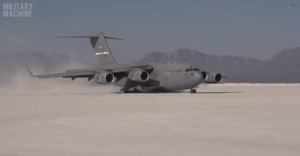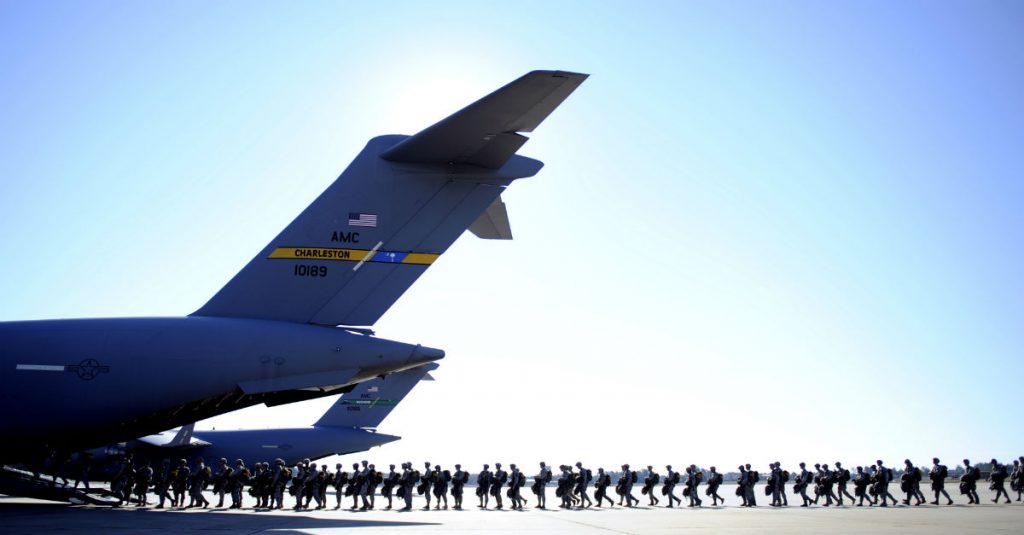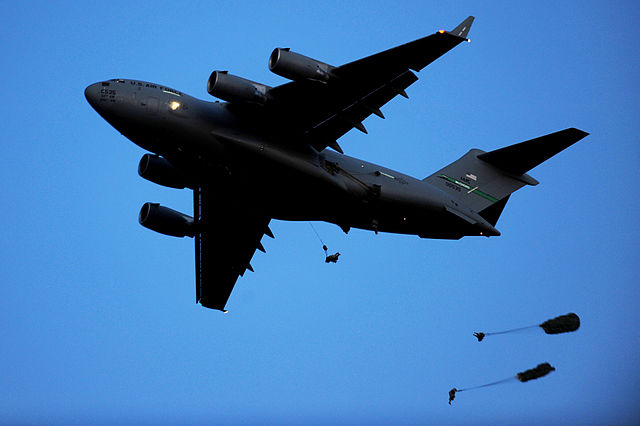Boeing C-17 Globemaster III
The Boeing C-17 Globemaster III is not a run-of-the-mill cargo hauler. Capable of lugging 80 tons—three M2 Bradley IFVs—of oversized cargo and setting down on short, unpaved runways a world away, the Globemaster has truly earned its title. If all 213 of these “medium” transports were activated at once, the US military could deploy 22,000 combat-loaded troops or 36.4 million tons of equipment to any hotspot around the globe in a matter of hours. All without even bothering the “heavy” transports in the US Air Force inventory.
Nicknamed “The Moose” by its crewmembers, the C-17 Globemaster III is the US government’s premier transporter of high-level VIPs. This ungainly workhorse comes equipped with a comprehensive suite of defensive countermeasures that rivals those of most combat aircraft.
Defenses:
The Globemaster’s fuselage is lined with blister-like enclosures housing sensors to detect and track missile launches. Once an infrared or radar guided missile is detected, the aircraft’s computer automatically deploys next-generation POET and GEN-X countermeasures, as well as the famous “angel wings” spread of decoy flares.

Variants:
The latest variants of “The Moose” also boast the Large Aircraft Infrared Countermeasure (LAIRCM), a high-powered laser countermeasure system. These mini-turrets, sometimes as many as four on high-value flights, can engage and blind multiple incoming weapons at long-range and all autonomously. Even the US president often switches to a C-17 when visiting military personnel in Iraq or Afghanistan, which temporarily confers the “Air Force One” call sign to the humble “Moose”.

Uses:
Originally, the Air Force deployed the C-17 Globemaster III simply to fill the transport gap between their C-130 tactical haulers and the massive C-5 cargo planes. But this versatile craft has become the military’s go-to air support solution for over twenty years. During NATO’s intervention in Kosovo, the brand-new C-17s were responsible for just over half of the total airlift missions for allied forces. In the War on Terror, this aircraft has been the prime hauler of heavy equipment to dangerous forward operating bases throughout Afghanistan and Africa.

Ruggedness:
The Globemaster’s unique survivability traits, which include quadruple-redundant flight controls in case an enemy missile makes it through the laser defensive shield, set it apart. However, that’s only part of its incredible adaptability.

Adaptability:
No other US transport can handle so many specialty, oversized loads and still land on unprepared runways. Thanks to the 5.5 meter wide cargo bay, C-17s can accommodate virtually all of the US Army’s heavy equipment, including Apache helicopters and even the 70-ton Abrams MBT. All while still leaving leg room for several dozen passengers.
Signature Mission:
In one of their most stunning operations to date, 15 Globemasters launched the largest combat airborne operation since the invasion of Panama in 1989. During the dead of night, they deployed 954 paratroopers from the 173rd Airborne Brigade onto a hostile landing zone outside of Bashur, Iraq on March 26, 2003. Over the next two days, three squadrons of C-17s airlifted the remaining 2,500 troops of the brigade, as well as an entire armored battalion full of heavy M1 Abrams, M2 Bradleys, M113s and artillery pieces. All without losing a single aircraft to enemy fire or accidents.
See C-17 Globemaster III Specifications
| Primary Function: Cargo and troop transport |
| Prime Contractor: Boeing Company |
| Power Plant: Four Pratt & Whitney F117-PW-100 turbofan engines |
| Thrust: 40,440 pounds, each engine |
| Wingspan: 169 feet 10 inches (to winglet tips) (51.75 meters) |
| Length: 174 feet (53 meters) |
| Height: 55 feet 1 inch (16.79 meters) |
| Cargo Compartment: length, 88 feet (26.82 meters); width, 18 feet (5.48 meters); height, 12 feet 4 inches (3.76 meters) |
| Speed: 450 knots at 28,000 feet (8,534 meters) (Mach .74) |
| Service Ceiling: 45,000 feet at cruising speed (13,716 meters) |
| Range: Global with in-flight refueling though |
| Crew: Three (two pilots and one loadmaster) |
| Aeromedical Evacuation Crew: A basic crew of five (two flight nurses and three medical technicians) is also added for aeromedical evacuation missions. Medical crew may be altered as required by the needs of patients |
| Maximum Peacetime Takeoff Weight: 585,000 pounds (265,352 kilograms) |
| Load: 102 troops/paratroops; also 36 litter and 54 ambulatory patients and attendants; not to mention 170,900 pounds (77,519 kilograms) of cargo (18 pallet positions) |
| Unit Cost: $202.3 million (although in fiscal 1998 constant dollars) |
| Date Deployed: June 1993 |
| Inventory: Active duty, 187; Air National Guard, 12; Air Force Reserve, 14 |

